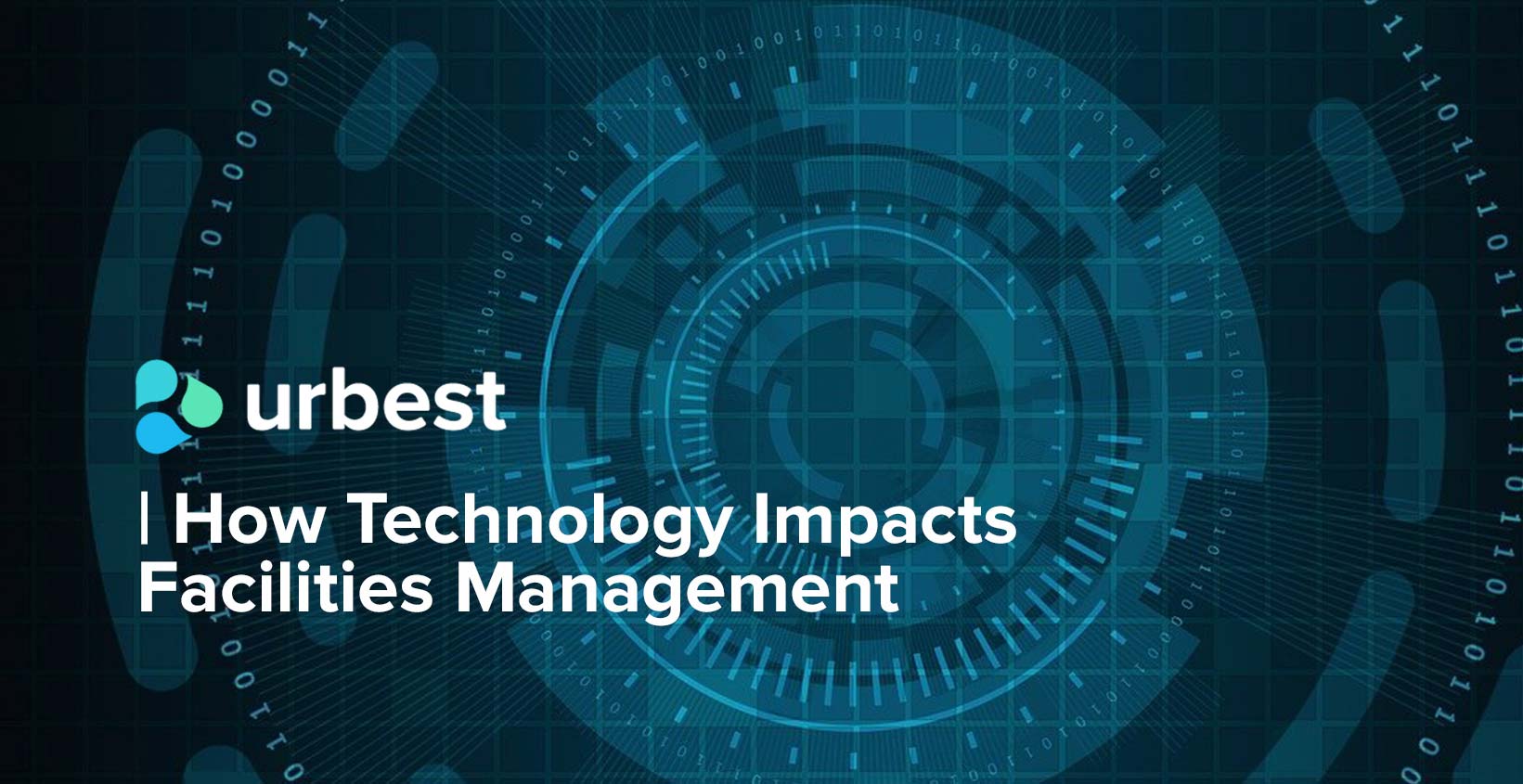How Technology Impacts Facilities Management
no correlation between a country’s increased use of robotics and a loss of manufacturing jobs. In fact, the increase we have seen in productivity, thanks in part to technological advancements, frees us up to innovate, which leads to an increase in higher-paying jobs.

In this fast-moving 21st century, technological developments have impacted every single sector of business great or small. While some celebrate this as achievement, others may be wary as to the long-term effect that could have on labor. Will we see a reduction in the number of jobs in the sector? Will technological advancements render me and my position obsolete?
A report by the Harvard Business Review suggests there is no correlation between a country’s increased use of robotics and a loss of manufacturing jobs. In fact, the increase we have seen in productivity, thanks in part to technological advancements, frees us up to innovate, which leads to an increase in higher-paying jobs. Not to mention that higher productivity means more profit which can trickle into an increase in wages across the board.
But, in order to benefit from this boom in productivity, technological advancements need to be implemented smartly. They must allow us to save time, improve the effectiveness of the physical resources we use, and add value to the products or services we are selling.
The dishwasher, to cite an obvious example, allows us to do the washing up in less time. A rental property that has a dishwasher can demand a higher rent than a property without one: time-saving technology put at the service of the customer, thus, adding value.
The field of facilities management is no exception.
Technological advancements have been used in FM to great results: decrease in downtime, decrease in maintenance costs, improvements in the lifespan of equipment and structures, improvements in space flow and capacity, added value for the customer, and so on. And a solid understanding of technology and its applications is a key requirement in a property manager job description.
Let’s look at some specific examples of how technology has impacted the facilities management sector and ways we can further benefit from it.
BIM (Building Information Modelling)
A digital representation of a physical structure and its assets, when used in conjunction with effective facilities management software, provides unprecedented access. This is not only useful to engineers and architects, but it also permits stakeholders to be more precise and timely with their demands and expectations.
Additionally, important information about the assets, including performance data, physical dimensions, and specifications, are updated continuously and made readily available for maintenance workers. This, invariably, leads to an increase in maintenance efficiency and, thus, a decrease in maintenance-related downtime.
For example, in April of 2016, the UK government mandated that BIM be incorporated in all construction projects financed by the central government—this, in an effort to reduce costs by an estimated 20%. Other European countries, as well as some states and government institutions in the US, have also imposed similar BIM compliance requirements.
While BIM has been around since the 1970s, it only started to gain serious traction in the mid-1990s and shows no signs of slowing down.

Virtual Modelling
Used in conjunction with BIM and effective facilities management software, virtual modeling provides a computer-generated 3D simulation of environments we can interact with.
This allows building managers to simulate changes to equipment and/or any structure before they are implemented physically. The unparalleled planning power provided by virtual modeling gives us significant insight:
- See how equipment placement will affect other assets
- Optimize space
- Map out potential customer flows
- Optimize the navigation of users of the facility
- Improve safety measures by running emergency simulations
- Enhance presentations of FM ideas and reports to stakeholders and customers
A significant portion of facilities management centers around space planning and space management. Virtual modeling in conjunction with facilities management software allows you to make more effective and efficient use of the space you are managing.
Augmented Reality
Whether through more precise asset monitoring or by added value for enhanced customer experience, targeted and effective implementation of augmented reality tools will greatly improve the value and lifespan of your assets.
AR provides added visibility access to equipment and infrastructure that otherwise would be difficult to reach.
- Pipes hidden in walls
- Underground tunnels that may present a danger to navigate
- Hard to reach equipment
Technology, like QR scanners or sensors, provides easy access to information which allows us to:
- Identify and minimize workplace hazards
- Carry out troubleshooting remotely
- Add precision and efficiency to inspections
We are still in the early stages of VR and AR capabilities. However, given that we are already seeing huge cost-saving and value-added benefits of this technology, there is no reason not to suspect a boom in its implementation is right around the corner.
The IOT (The Internet of Things)
Equipment and devices connected to the internet allow us, not only, to accurately diagnose a problem, but it allows us to predict an eventual decrease in performance or failure.
An integral part of any good building maintenance strategy consists of predictive maintenance.
With the IOT and effective facilities management software, we are able to more accurately predict and plan for maintenance. The benefits of this are multiple:
- An extension of an asset’s and its equipment’s lifespan
- Improved compliance with energy standards
- A decrease in maintenance-related downtime
- An increase in equipment efficiency by implementing a change or an update when lost revenue due to decreased performance exceeds the cost to repair or replace
It has only been relatively recently (10 – 12 years) that we’ve got a glimpse of what the IOT can bring to facilities management. Already, the benefits have had a noticeable impact on the sector. We can expect this trend to continue.
Automation
Historically, automation has tended to complement the workforce, rendering workers more productive rather than replacing them. The simple reason behind this is that workers are able to delegate repetitive tasks to machines, which, in turn, allows them to focus on more creative (or human) tasks.
Thus, in a way, machines allow us to be more human.
This is especially the case with asset management automation.
“Factories operate like small indoor cities, complete with roads, traffic, intersections and pedestrians,” Clearpath CEO and co-founder Matt Rendall says. “Unlike city streets, a factory floor is a controlled environment, which makes it an ideal place to introduce self-driving vehicles at scale.”
FM is a time and labor-intensive service industry. Automation is time and labor-saving technology. The two make for a good fit.
Automation in facilities management isn’t going away. In fact, its role is expanding. And this is a good thing.
Free yourself from menial tasks. By implementing automation technology in conjunction with effective facilities management software, you will be able to focus on more creative ways to add value to your assets and improve the bottom line.
Drones
Drones offer practical advantages in the facilities management sector. Drones are not dependent on favorable weather conditions to complete their tasks. They can provide a safe alternative when the need arises to access potentially dangerous spaces.
Some of the earliest drone models were used in disaster relief; following an earthquake, drones were sent into the rubble to help identify, if not retrieve, injured or fatally wounded people.
To a large extent—and aside from carrying out deliveries—since then, their role has not evolved much beyond that. With the advancements made in AI, it is safe to assume that the more complex tasks will be carried out with automation that possesses some level of artificial intelligence.
Still, drones are popular in storage facilities to retrieve hard-to-reach items, as well as in any environment where worker safety is a concern.
Artificial Intelligence
In this unprecedented age of digitalization, we are able to gather a staggering quantity of data points. This newfound influx of information is limited, in its use to us, by our capacity to interpret it and implement its consequences.
This is where AI comes into play. From more accurate predictions (projected earnings and future maintenance needs) to more precise budgeting and planning, the more complex the data points we collect through BIM, AR and the IOT, the more sophisticated AI we will need in order to implement them.
Thus, though we are still in the early stages of AI, it has already become an inescapable necessity.
- Whereas human brains are naturally creative and great at pattern recognition, artificial intelligence can process information faster and simulate many outcomes based on an array of inputs,” writes Allison Scott, author and head of Autodesk. “The result is a likely future where designers and AI-based applications can likely collaborate on designs — that future is closer than you might think.”
Tracking and Productivity Software
Productivity tools include tracking tools such as to-do lists, ticketing systems, workflow management or even CRM. The principle is to collect and structure data to make it easy to follow and quickly access the right data at the right time.
For example, a CRM will enable you to register a contact while sending an email. With field service management like Urbest, one can be notified while a supplier performs a task.
The gain of these tools are generally on time saved, more accurate data and ability to unlock new services thanks to a better understanding of operational data.
Productivity tools also include the ability to nudge. The principle is to give a reminder to a person at the right time to take actions. It can take the form of a pop-up to be reminded to do something or simply an email reappearing to be reminded to follow-up on something.
Specifically applied to field management, business intelligence tools that streamlines workflows and uses data collection and analysis to improve and facilitate every phase of building management.
- Streamline communication via information-sharing platform
- Unified services under one roof
- Provide a database of pertinent information, accessible to the relevant parties
- Measure performance against target to prepare improvements
Incorporating field management is a must these days because it saves so much time on administrative tasks. The variety of products on the market range from the feeble and incomplete to the unnecessarily complex. But some do hit the Goldielocks spot in between. What’s important is that you find one that is customizable and can adapt to your evolving needs.
If you are unsatisfied with your process in place or if you want to go to the next level, why not request a free demo, today?
You can also read:
What Facility Managers are saying after one year of COVID-19
